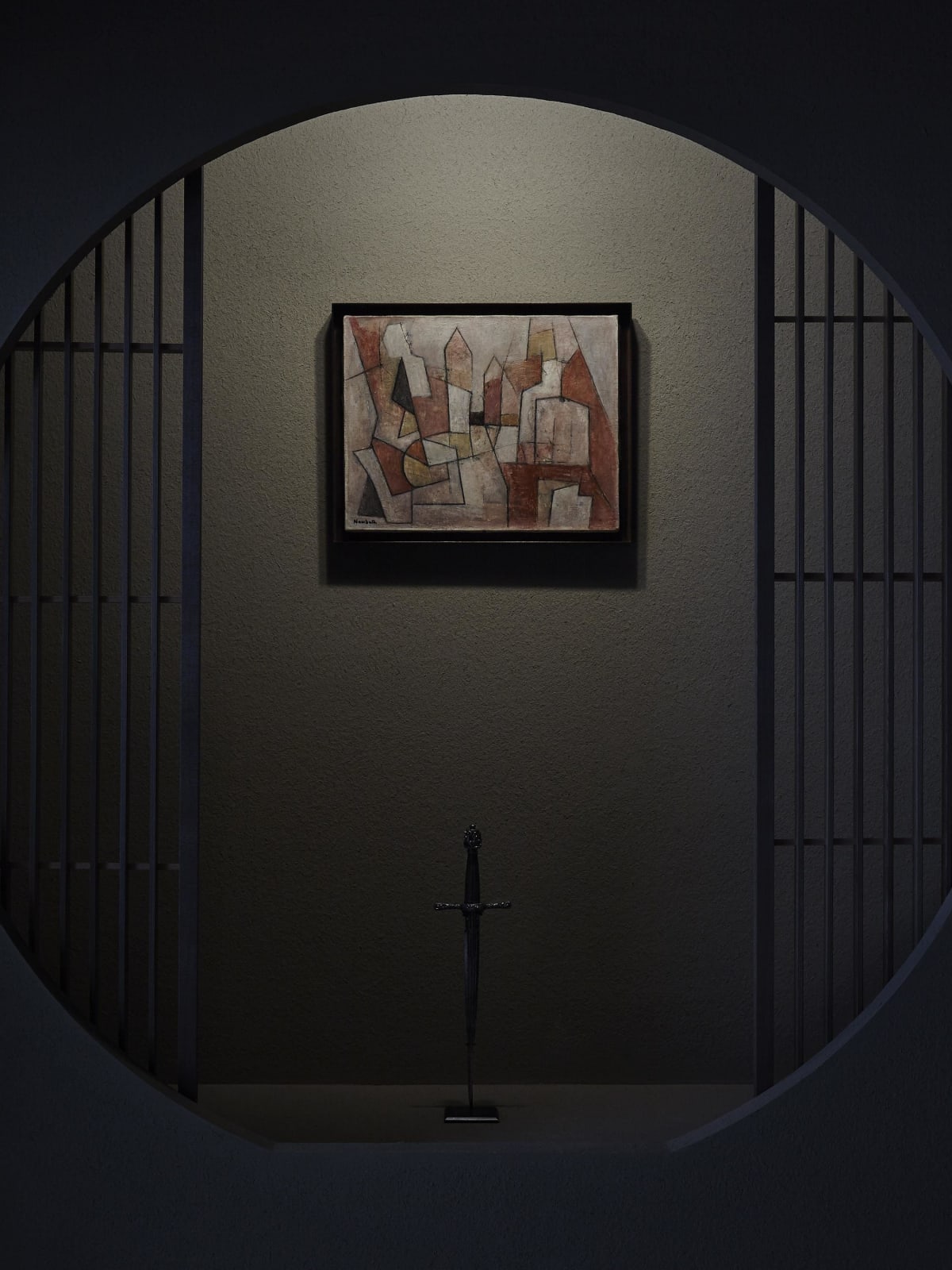Nambata Tatsuoki (1905–1997)
Houses on the Hill
Oil on canvas, framed (6F)
Signed by the artist on the back
Dated 1955
31.8 x 40.7 cm
35.2 x 44.2 cm (overall)
Signed by the artist on the back
Dated 1955
31.8 x 40.7 cm
35.2 x 44.2 cm (overall)
Further images
Nambata Tatsuoki is known for his abstract expression brimmed with inner emotions. His artistic career started from his acquaintance with Takamura Kotaro, who introduced Nambata to Taiheiyo Art Association. Nambata started to experimented with abstract expressions in the postwar time, when the novel abstraction art was largely influential around the world. Nevertheless, Nambata, in his own words, “created cubist works naturally.”
The present work is dated 1955 on the back. Around the time, Nambata often “sketched landscapes and recomposed the work in lines back at atelier.” The “mechanical beauty of steel frames” greatly appealed to Nambata. He made drawings of inorganic man-made objects, and through it he “strove to give clear forms to the undetermined matter whirled within [his] inner self.” The present work indeed seeks to represent the motif in a geometric manner, which expresses the artist’s mindscape in lucidity. Despite the seemingly inanimate scene that is composed of straight lines, the art critic Okada Kenjiro found “a quality of poesy” in Nambata’s works of this period. Such sense of human warmth is indeed filled in the present work.
Nambata Tatsuoki (yoga painter; 1905–1997)
Hokkaido-born yoga painter. Quitted his studies at Waseda University, and learned painting at Taiheiyo Art Association. Joined Kin’yo-kai led by Kawashima Riichiro through Takamura Kotaro’s introduction. His work, Kodachi, was exhibited at the fourth Kokuga-ten. After withdrawal from Kokuga Sosaku Kyokai (Association for the Creation of National Painting), he was involved in the founding of Abangyarudo geijutsuka kyokai and Jiyubijutsuka kyokai. Continued his abstract expressions after the war, and had his retrospective show at the National Museum of Modern Art, Tokyo in 1987. Received the Mainichi geijutsu-sho award. Published books Chusho (abstraction) and So, an illustrated collection of poems.
The present work is dated 1955 on the back. Around the time, Nambata often “sketched landscapes and recomposed the work in lines back at atelier.” The “mechanical beauty of steel frames” greatly appealed to Nambata. He made drawings of inorganic man-made objects, and through it he “strove to give clear forms to the undetermined matter whirled within [his] inner self.” The present work indeed seeks to represent the motif in a geometric manner, which expresses the artist’s mindscape in lucidity. Despite the seemingly inanimate scene that is composed of straight lines, the art critic Okada Kenjiro found “a quality of poesy” in Nambata’s works of this period. Such sense of human warmth is indeed filled in the present work.
Nambata Tatsuoki (yoga painter; 1905–1997)
Hokkaido-born yoga painter. Quitted his studies at Waseda University, and learned painting at Taiheiyo Art Association. Joined Kin’yo-kai led by Kawashima Riichiro through Takamura Kotaro’s introduction. His work, Kodachi, was exhibited at the fourth Kokuga-ten. After withdrawal from Kokuga Sosaku Kyokai (Association for the Creation of National Painting), he was involved in the founding of Abangyarudo geijutsuka kyokai and Jiyubijutsuka kyokai. Continued his abstract expressions after the war, and had his retrospective show at the National Museum of Modern Art, Tokyo in 1987. Received the Mainichi geijutsu-sho award. Published books Chusho (abstraction) and So, an illustrated collection of poems.







